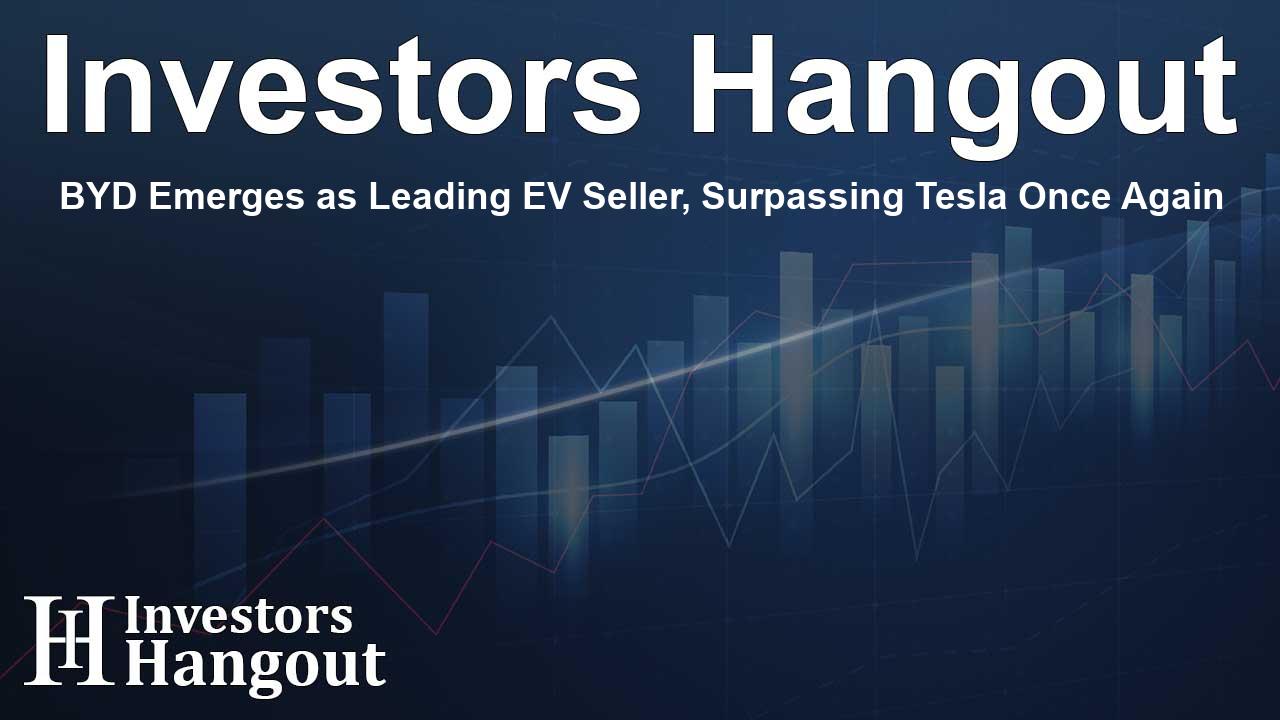BYD Emerges as Leading EV Seller, Surpassing Tesla Once Again

BYD Claims the Top Spot in EV Sales
In an exciting development in the electric vehicle sector, Chinese powerhouse BYD Co Ltd has once again surpassed Tesla Inc to emerge as the world’s biggest seller of battery electric vehicles (BEVs) for the fourth quarter of the year. The competition between these two giants has become increasingly fierce, highlighting the evolving dynamics of the EV market.
Quarterly Sales Breakdown
During the last quarter, Tesla announced the delivery of 495,570 BEVs, a notable number but significantly lagging behind BYD, which sold 595,413 BEVs in the same period. This performance has allowed BYD to reclaim a leading position in the BEV market.
Annual Performance Insights
While BYD secured the quarterly lead, Tesla maintained an impressive annual total, ending the year with 1,789,226 BEVs sold and remaining the bestselling pure EV brand for the year. In comparison, BYD delivered a total of 1,764,992 BEVs, which is just shy of Tesla's annual figures by 24,234 vehicles.
The Evolution of Market Leadership
This rivalry isn't new; it began when BYD first surpassed Tesla in late 2023. Tesla regained its lead for the first quarter of 2024, successfully holding onto it for three subsequent quarters. The market's volatility and strong competition are shaping the future direction of electric vehicle sales.
Year-over-Year Growth Patterns
For Tesla, 2024 has marked a critical turning point as it records its first annual decline in vehicle deliveries, falling by 1.1% from the previous year. To maintain growth, Tesla needed to deliver over 514,926 vehicles in the final quarter, a target it couldn't achieve. In contrast, BYD experienced a robust 12% increase in BEV sales year-on-year, showcasing its growing market presence and consumer interest.
The Future Outlook for BYD and Tesla
The current landscape suggests a thrilling future for both companies as they adapt to changing consumer preferences and innovate in technology. This continued competition is likely to bring more choices and improvements for EV enthusiasts and potential buyers alike.
Frequently Asked Questions
What led to BYD's success in Q4?
BYD's ability to ramp up production and offer appealing models likely contributed to its recent success in surpassing Tesla in quarterly sales.
How does Tesla's annual sales performance compare?
Tesla remains the leading pure EV brand in annual sales, with nearly 1.8 million vehicles sold, despite a decline compared to the previous year.
What are the implications for the EV market?
The competition between BYD and Tesla may encourage further innovation and lower prices in the EV market, benefiting consumers.
What growth did BYD achieve in 2024?
BYD reported a growth of 12% year-on-year in BEV sales, indicating increasing demand and consumer acceptance.
What can we expect from both companies in the future?
As both companies continue to expand their product offerings and technological capabilities, consumers can expect more competitive pricing and innovative features in future EV models.
About Investors Hangout
Investors Hangout is a leading online stock forum for financial discussion and learning, offering a wide range of free tools and resources. It draws in traders of all levels, who exchange market knowledge, investigate trading tactics, and keep an eye on industry developments in real time. Featuring financial articles, stock message boards, quotes, charts, company profiles, and live news updates. Through cooperative learning and a wealth of informational resources, it helps users from novices creating their first portfolios to experts honing their techniques. Join Investors Hangout today: https://investorshangout.com/
Disclaimer: The content of this article is solely for general informational purposes only; it does not represent legal, financial, or investment advice. Investors Hangout does not offer financial advice; the author is not a licensed financial advisor. Consult a qualified advisor before making any financial or investment decisions based on this article. The author's interpretation of publicly available data shapes the opinions presented here; as a result, they should not be taken as advice to purchase, sell, or hold any securities mentioned or any other investments. The author does not guarantee the accuracy, completeness, or timeliness of any material, providing it "as is." Information and market conditions may change; past performance is not indicative of future outcomes. If any of the material offered here is inaccurate, please contact us for corrections.